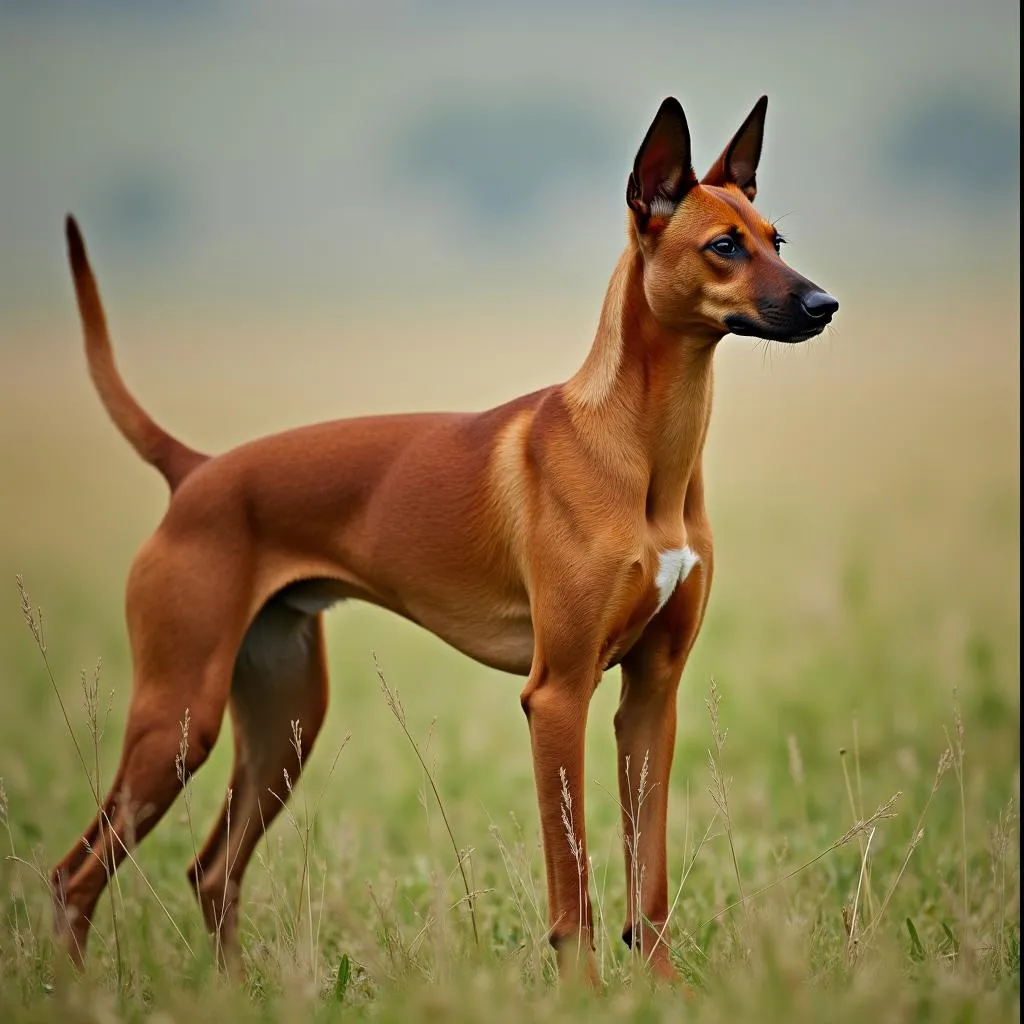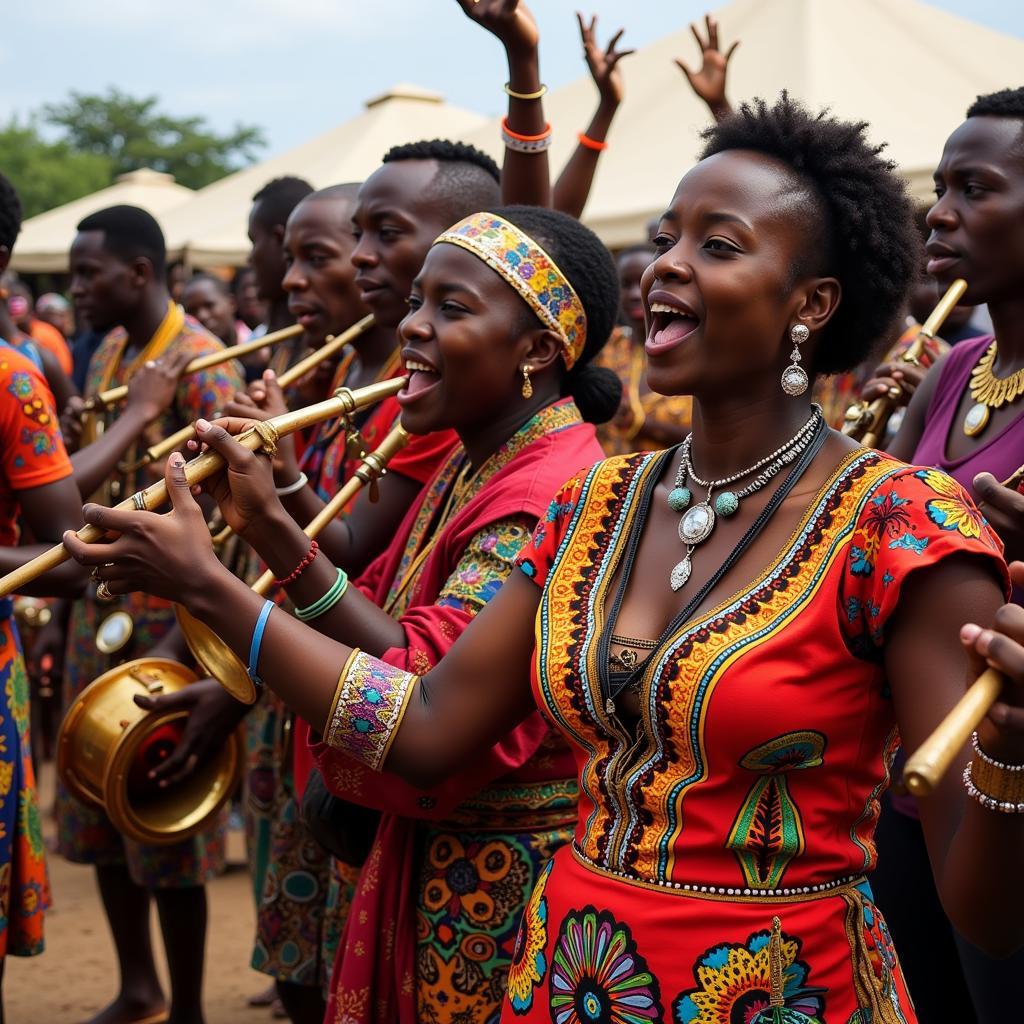Unlocking the Mystery: Getting to Know the African Dog Basenji
The African dog breed, the Basenji, often referred to as the “barkless dog,” is an ancient and unique breed originating from the heart of Africa. Known for their distinctive yodeling sound, striking appearance, and independent nature, Basenjis are gaining popularity worldwide. But what makes this breed so special? Let’s delve into the fascinating world of the Basenji and discover the secrets behind their enigmatic charm.
Tracing the Roots: The Basenji’s African Heritage
 Basenji dog standing gracefully in a grassland, its ears perked up and tail curled.
Basenji dog standing gracefully in a grassland, its ears perked up and tail curled.
The Basenji’s history can be traced back thousands of years to ancient Egypt. Depictions of dogs resembling Basenjis can be found in ancient Egyptian artwork and tombs, suggesting their presence and importance in those times. These dogs were prized by Pharaohs and often given as gifts to royalty in other lands.
Beyond Egypt, the Basenji’s journey continued in the Congo Basin, where they were adopted by various tribes for their hunting prowess. Their silence and agility made them ideal partners for tracking small game through dense forests. The tribes revered the Basenji, incorporating them into their cultural practices and folklore.
A Unique Blend: Basenji Characteristics and Temperament
 Close-up of a Basenji dog's face with its signature wrinkled forehead and a curious expression.
Close-up of a Basenji dog's face with its signature wrinkled forehead and a curious expression.
The Basenji is a sight hound, categorized by its slender, athletic build and keen sense of sight. They are relatively small in size, typically weighing between 20-24 pounds and standing around 16-17 inches tall. Their short, fine coat comes in four distinct variations: red & white, black & white, tri-color (black, tan & white), and brindle & white.
Perhaps the most intriguing characteristic of the Basenji is their inability to bark. Instead, they communicate through a unique yodeling sound, often referred to as a “baroo.” This unusual vocalization, coupled with their expressive ears, wrinkled forehead, and tightly curled tail, gives them an undeniably charming and mischievous appearance.
Beyond their looks, Basenjis are known for their intelligence, independence, and playful nature. They are affectionate with their families but can be reserved around strangers. Their intelligence makes them quick learners, but their independent streak requires patience and positive reinforcement during training.
Living with a Basenji: What You Need to Know
 Action shot of a Basenji dog running joyfully in a park, a colorful toy clutched in its mouth.
Action shot of a Basenji dog running joyfully in a park, a colorful toy clutched in its mouth.
Owning a Basenji is a rewarding experience, but it’s essential to be prepared for their unique needs. Their high energy levels necessitate daily exercise and mental stimulation. They thrive in active households with owners who can provide them with ample opportunities for play, exploration, and adventure.
Their intelligence and independence can sometimes translate to stubbornness, making training a rewarding challenge. Positive reinforcement methods, consistency, and early socialization are crucial for a well-adjusted and happy Basenji.
Conclusion: Embracing the Spirit of the African Basenji
The African dog breed, the Basenji, is a living testament to Africa’s rich history and cultural tapestry. Their unique vocalizations, striking appearance, and independent spirit make them a captivating breed. While they might not be the ideal fit for every household, those willing to embrace their individuality will find a loyal, playful, and utterly charming companion in the Basenji.


